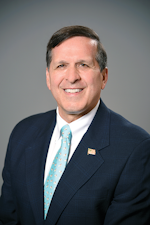How to row your lifeboat: High-value recovery strategies for coping with the pandemic (Part 2)
COVID-19 has changed dentistry and dental practice forever, making owners feel as if they are drowning in a sea of issues such as infection control, lower patient volume, and patients with health, safety, and financial concerns. The good news is that, with the right strategies, you can build your own lifeboat, chart your course, and successfully row yourself back to land.
This is the second article in a three-part series focusing on strategies that will allow dental practices to recover faster, better, and deeper from the COVID-19 crisis. Part one outlined strategies 1-4. This article will tackle strategies 5-10.
Strategy 5: The new normal
The COVID-19 crisis will cause periods of low volume and pent-up demand, so practices must always be prepared to manage both the lowest and highest number of patients. Patient volume may first be heavy due to pent-up demand, then become lighter due to patients’ health, safety, and economic concerns, but hygiene schedules should gradually build back up as people become used to the new normal.
Encouraging patients to come back to your practice must involve putting in effort every day to reschedule any patients who do not have appointments. Reactivation of patients without appointments goes directly to the heart of increasing practice production. Remember, production creates revenue, revenue creates cash, and cash creates income, which is critical to practice recovery.
Strategies that will help to get a higher volume of patients into the office include adding extra hygiene hours, hiring temporary hygienists, or even having half or entire hygiene days. And remember, every patient should have their next appointment scheduled before they leave your office. When patients come in for regular hygiene, they are making a commitment to stay with the practice. If hygiene appointments become light again, it will be necessary for practices to reevaluate the number of hygiene hours and hygienists needed, and whether the doctor wants to participate in providing hygiene services.
Strategy 6: Your breakeven point
Know your breakeven point. This might be the single most important number you need to know in a business turnaround or recovery. The breakeven point is simply the dollar amount needed to cover expenses that need to be paid in a specific period. If the practice brings in revenue equivalent to the expenses, it has “broken even.” When practice revenue exceeds expenses, the practice has moved into profitability, which is exactly where it wants to be. Normally, Levin Group would recommend evaluating the breakeven point monthly. However, due to the rapidly changing nature of a practice recovery, we suggest that it be assessed weekly so that the practice will know exactly how much cash will be necessary to pay expenses. We expect most practices to have revenue exceeding expenses most weeks. Try not to panic if there is a week here and there when expenses exceed revenue. In many cases, it’s merely a timing issue, but one that you want to check.
Strategy 7: High-revenue patients and production
Look for every opportunity to maximize production per hour in the practice. Levin Group now suggests that practices measure production per hour per doctor, production per hour per hygienist, production per day per doctor, production per day per hygienist, total production for all doctors, and total production for all hygienists. There should be a specific daily goal for the doctor, hygienists, and total practice.
If the practice underperforms day after day, then modifications need to be made. Conversely, if the practice meets its goals, then it is recovering faster. Also remember that performing as much dentistry as possible in one appointment will help reduce overhead and PPE needs, decrease the number of times a practice needs to charge the patient, and create a higher level of convenience for patients.
Start by scheduling patients that represent the highest revenue. When you do this, you have more production coming in the door, which leads to revenue, cash, and income. High revenue patients are often patients who are new and/or require emergency treatment. Typically, new patients have a 200%-300% higher financial value to the practice in the first 12 months, and emergency patients usually accept treatment. Concentrating on these patients will help the practice recover faster.
Strategy 8: Expanded financial options
Given the large-scale impact of COVID-19, the recession that has resulted may be longer and deeper than any other economic downturn we’ve faced before. For practices to survive, we highly recommend being proactive and expanding financial options.
These three suggestions would be a good place to start. First, practices can increase the use of patient financing by 300% over the 2019 average patient financing revenue. Patient financing creates a powerful incentive for patients to keep appointments and accept recommended treatment.
Next, practices may want to begin offering payment plans. Always collect at least 50% of the fee before starting treatment and assume that some number of payments will be made before any patient defaults. Even if 8% (our observed average) of payment plans aren’t completed, these payments are still highly beneficial as they help to cover overhead expenses and provide some level of profitability.
Lastly, practices may want to look at offering discounts. Offering a 10%-15% discount for patients who are unable to afford full treatment otherwise still allows the practice to maintain profitability and cover expenses. Discounts should be offered based on which patients are more likely to accept treatment.
Strategy 9: Insurance participation
Prior to COVID-19, 11% of practices were 100% fee-for-service. Based on evidence from the 2008-2009 recession, Levin Group now estimates that this number will drop to between 5% and 6% by December 2020. This is because when many practices are facing a crisis or challenge, they race to enroll in new insurance plans. However, while this could be beneficial, it could also be a mistake. Believe it or not, enrolling in certain insurance plans can result in lower production. Other times, it can be a positive contribution to practice production. So how do you know what you’re getting into?
The best course of action is to analyze your current insurance position. Make sure to familiarize yourself with key statistics, including the number of patients across all insurance plans, the number of patients in each insurance plan, the revenue across all insurance plans, and the revenue from each insurance plan. This is a crucial step toward practices being able to decide whether to enroll in or exit a specific plan.
Strategy 10: Scripting
Over the last 36 years, we have been recommending scripting as an essential element of effectively implementing practice systems. Systems control how well the practice will perform and scripting is one of the major components of successful systems. Unfortunately, there are many practices that never use scripting. And while this may have been acceptable when practices were performing well, during the recovery from COVID-19 the margin of error will be significantly lower. As a result, practices must now view scripting as mandatory. Scripting is not part of the job; it is the job. With scripting, the practice will turn around faster and recover deeper. Without scripting, the practice will be slower to bounce back from the effects of the COVID-19 crisis.
To help practices meet the challenges of recovery, Levin Group is promoting an approach we call “compassionate scripting.” It’s based on the concept that great leaders must have compassion and apply it to all leadership activities including their communications. Compassionate scripting is built around creating a framework in all scripts to demonstrate empathy and compassion. For example, all scripts should be able to achieve the following:
Acknowledge the situation: “Mrs. Jones, this has certainly been a challenging time for so many people. As always, your health and safety are our top concern.”
Display empathy: “I hope that you and your family are safe and healthy.”
Relay the purpose of the script: “Mrs. Jones, we want to find a convenient time for you to come in for your hygiene appointment.”
Explain what you’ll do: “Mrs. Jones, we’ll make your appointment at your favorite time in the late afternoon and also send you a text reminder 48 hours in advance.”
Let them know you’re available to them: “Mrs. Jones, it was a pleasure to talk to you today. If you have any questions or if I can do anything for you at any time, please feel free to call me.”
Having written and deployed many compassionate scripts based on this formula, we have seen that it works extremely well.
Summary
You can use these strategies to help save yourself from drowning in a sea of lost patients, production, and revenue. Practices that implement some or all these strategies will recover faster, better, and deeper.
Editor's note: This is the second article in a three-part series. Read part one here, and look for part three in October.








